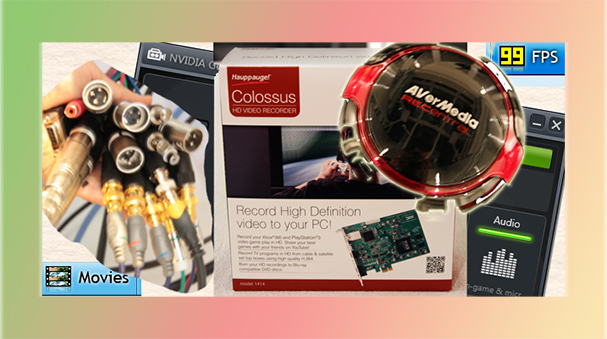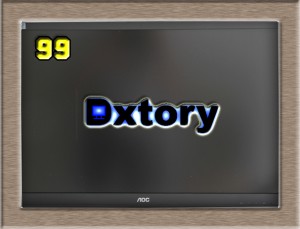A Captivating Experience.

With so many proud and capable gaming archivists already sharing their finest footage, I was eager to use what knowledge I had to thoroughly research the best possible techniques for capturing, editing and publishing using an exotic mix of hardware and software.
In an age where the 16:9 widescreen HD format was omnipresent, a minimum capture resolution of 720p (1280×720 pixels) seemed essential, though and a good deal of the titles we’d be browsing would prompt insistence that full HD 1080p (1920×1080 pixels) was the accepted norm, WQHD 1440p (2560×1440) was becoming increasingly popular and even UHD 2160p, also known as 4k (3480×2160 pixels) was enjoying a rapid uptake amidst “extremists”!
It was initially hard to think of single formula that would achieve the perfect result for every gaming scenario.
Far older games – from the nineties to the turn of the millennium – used lower resolutions with a 4:3 aspect ratio such as VGA (320×200 pixels) and SVGA (640×480) and these, many hardware and software based capture tools did not support. Additionally, the visually delectable wonderlands of 1440p and 2160p were equally hard to document in their native form due to a similar scarcity of hardware support and software based alternatives demanding unreasonable reserves of CPU power and disk space.
The Softer Approach.
 Amongst the most popular means of chronicling a gamer’s triumphs and disasters were two ingenious pieces of software, FRAPS and DXTory.
Amongst the most popular means of chronicling a gamer’s triumphs and disasters were two ingenious pieces of software, FRAPS and DXTory.
Small, neat applications requiring little over a single megabyte of disk space. Following installation, these programs were executed and continued running discreetly in the system tray, with an option for them to initialize during boot up.
Various short cut keys enabled detailed data logging, including frames per second, individual frame intervals and for the recording of any Direct3d or OpenGL generated screen activity.
As with frequent derivatives, both FRAPS and DXTory intercepted the host video card’s output at frame buffer level with no external connections involved and hence, negligible risk of image degradation.
Quality was beyond reproach since further to this infallible capture technique, all recorded files were stored in a proprietary, low compression AVI format. The advantage, a crystal clear mastering of those euphoric episodes a lofty gamer’s rivals would sneeringly shun if conveyed in words alone.
The penalty, a hard drive, or several, whose very platters pleaded for redemption. FRAPS contained a modest but invaluable series of options including a choice of four fixed frame rates, one definable by the user, as well as the facility to capture audio played back by the windows mixer and record directly from a sound card’s line and microphone inputs.
DXStory went further by allowing audio to be preserved in multiple streams and then extracted for mixing and mastering during post production, indispensable for those wishing to compound their concise keystrokes with a delicately balanced live commentary. In FRAPS, footage itself could be captured in either full or half frame with resolution being dictated by the game’s internal settings.
The supposed limit was a colossal 7680×4800, higher than any other software or hardware I tested. Sadly, establishing proof of such a claim was far in excess of my technical limits and even if it hadn’t been, those avaricious AVIs would have made the process unfeasibly cumbersome and costly for regular use.




